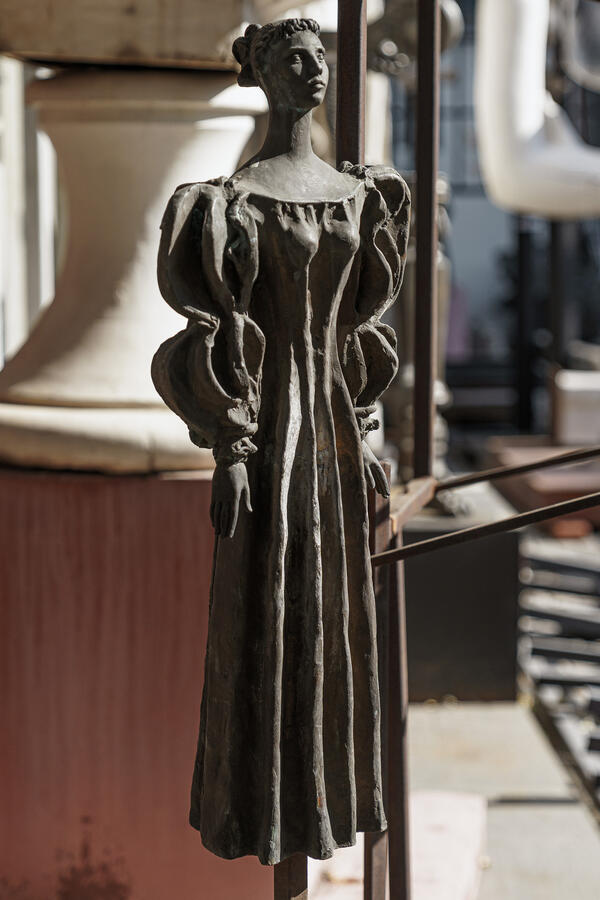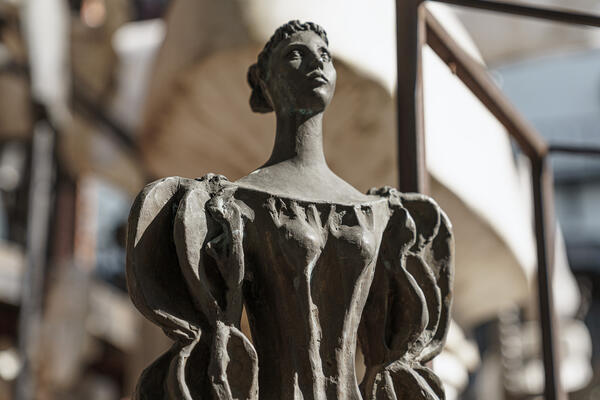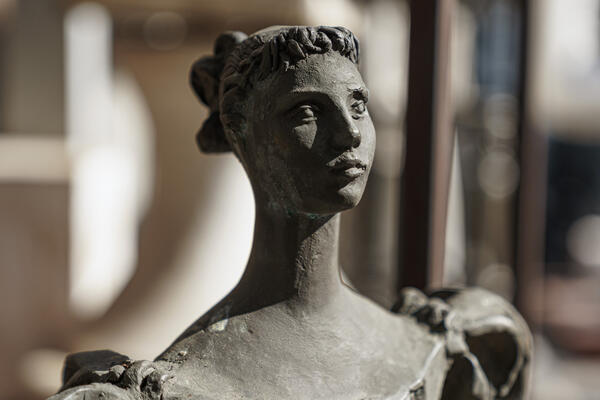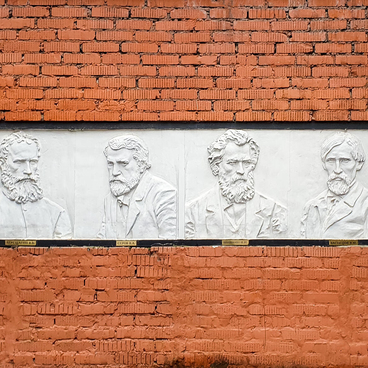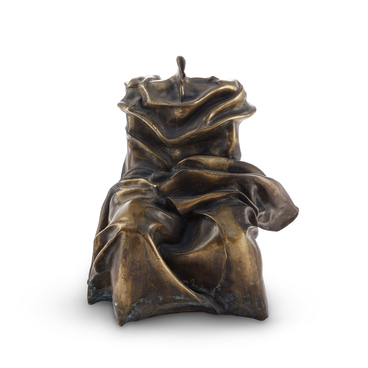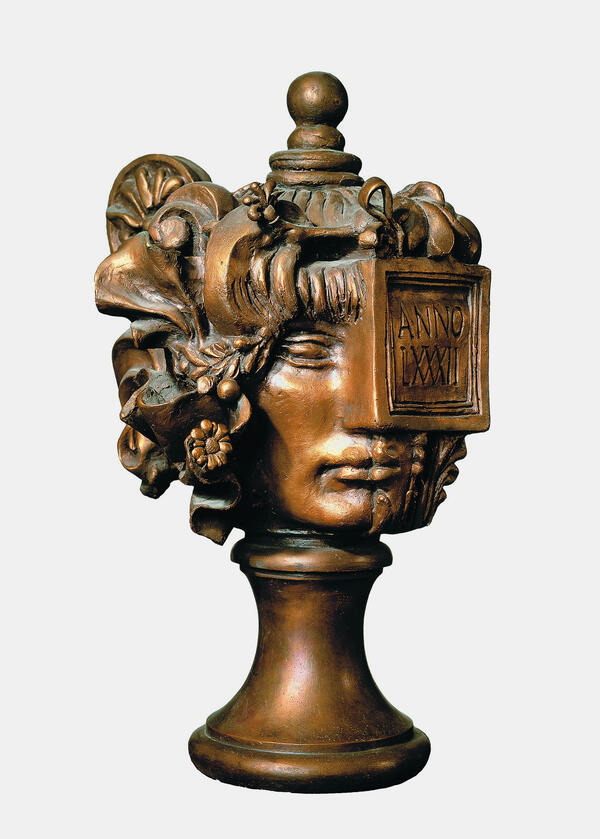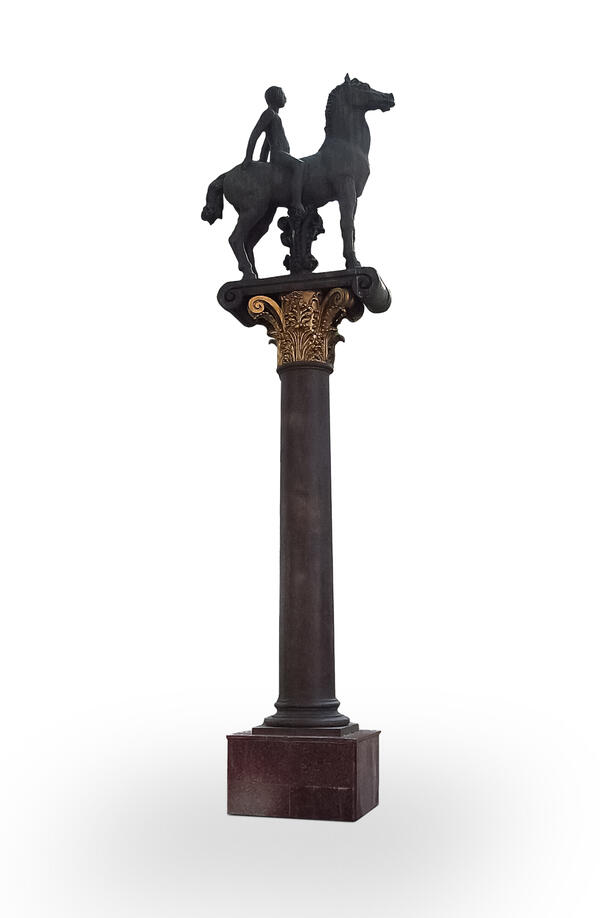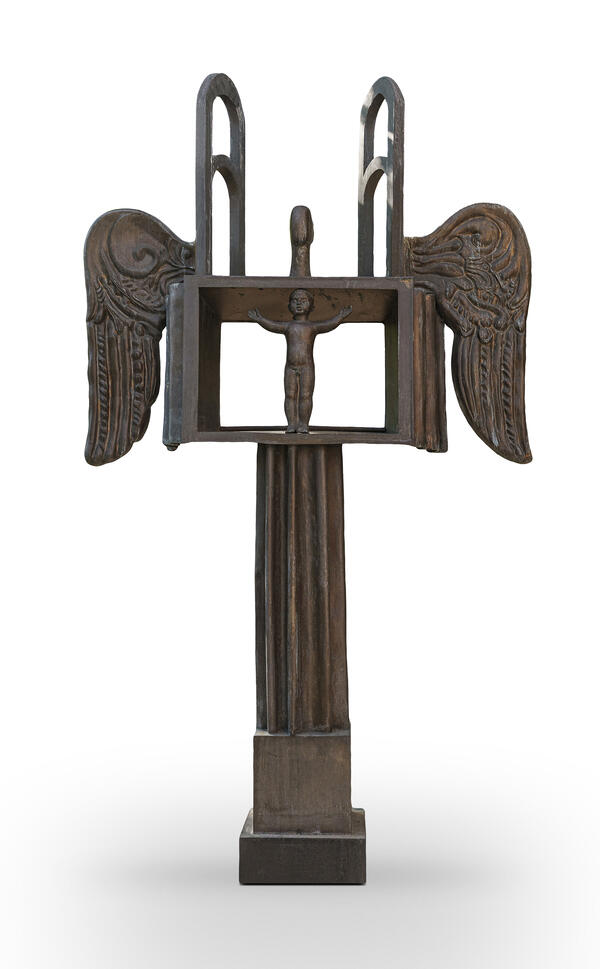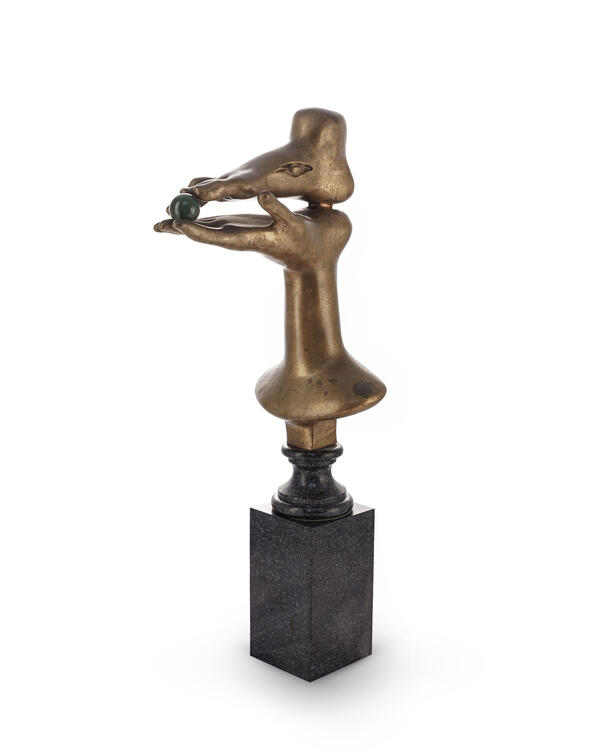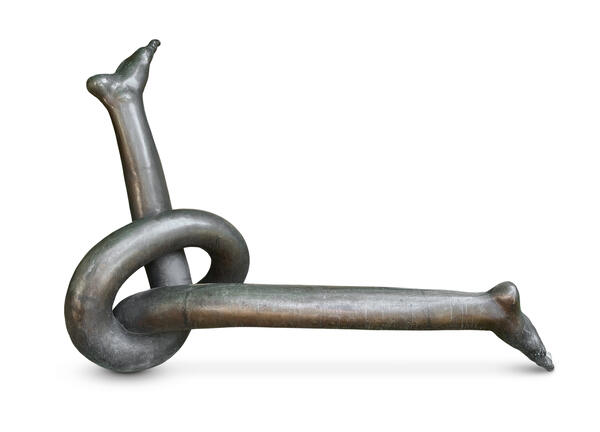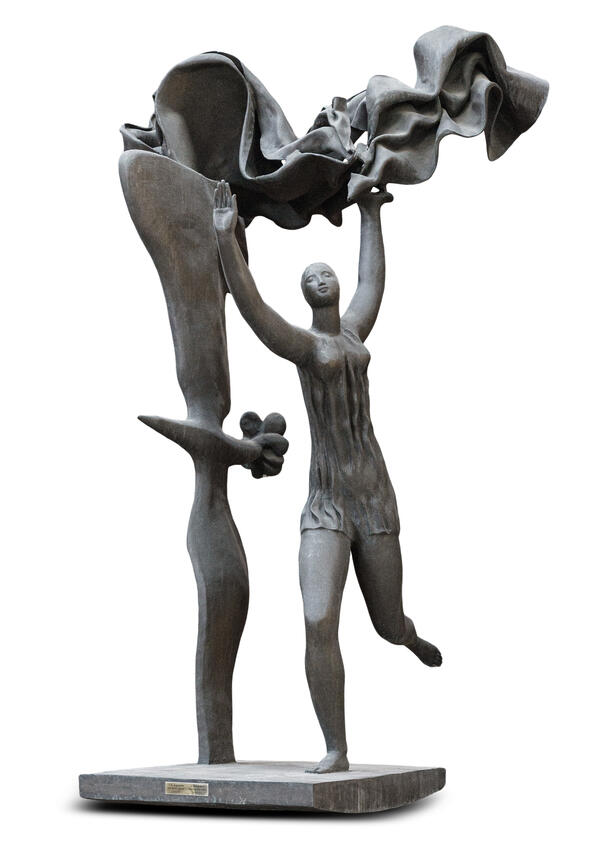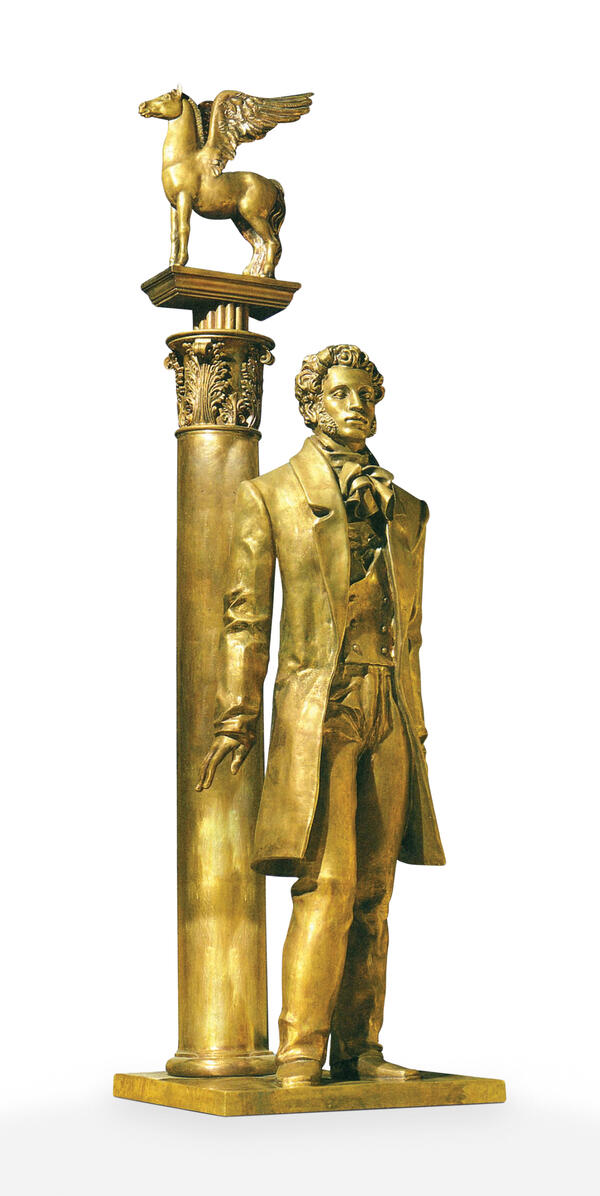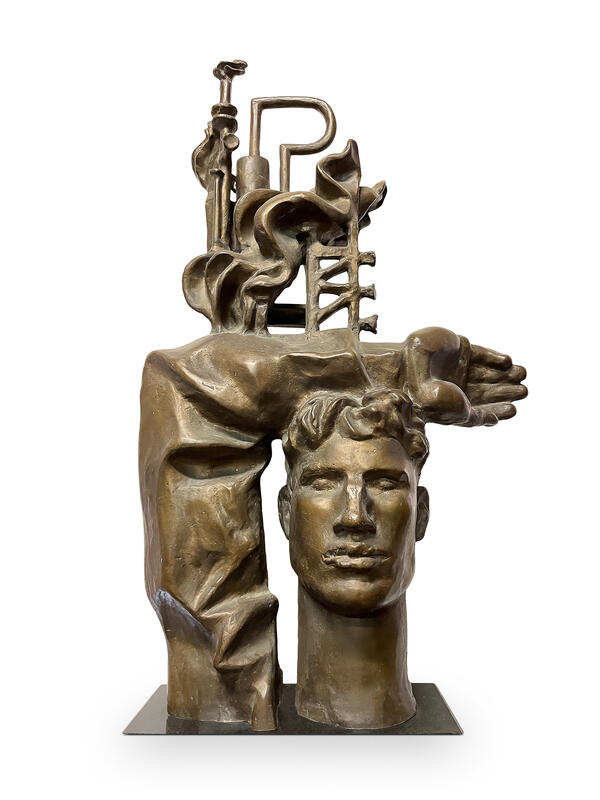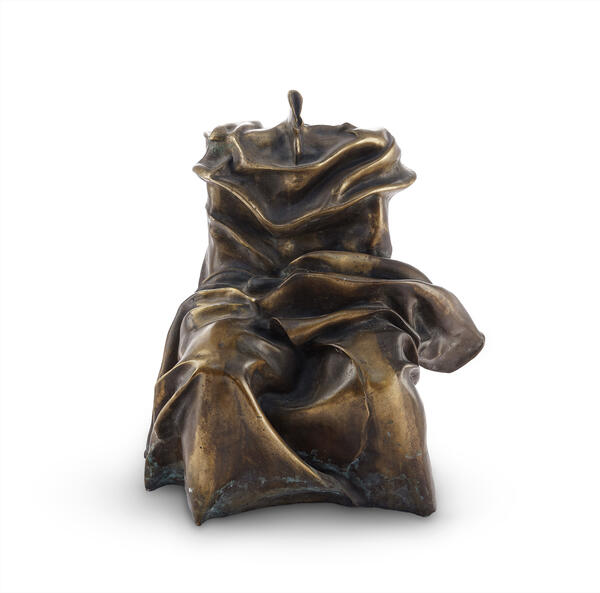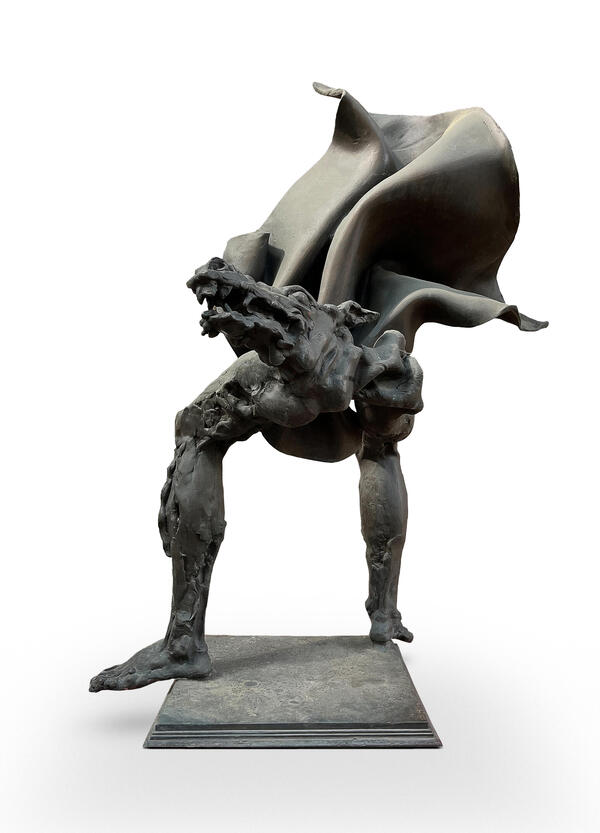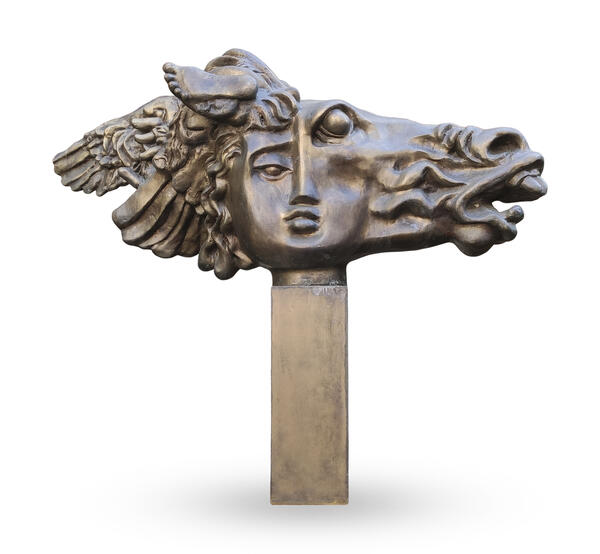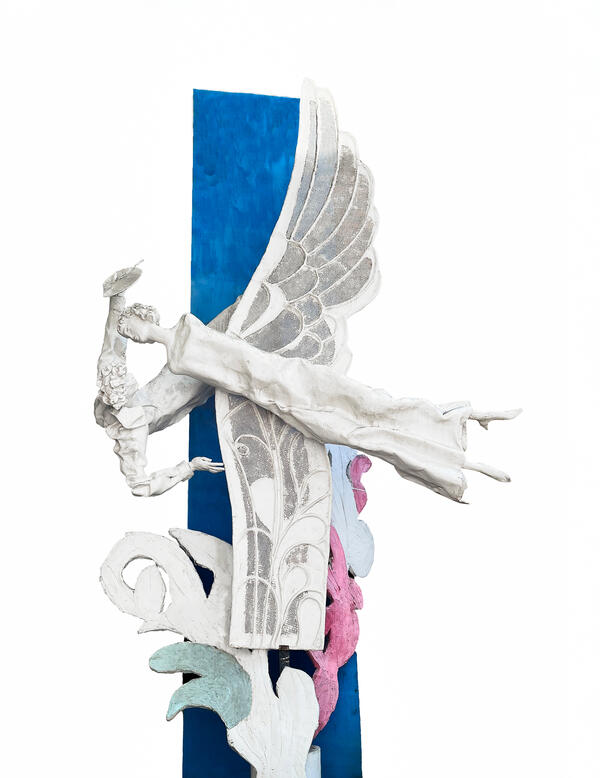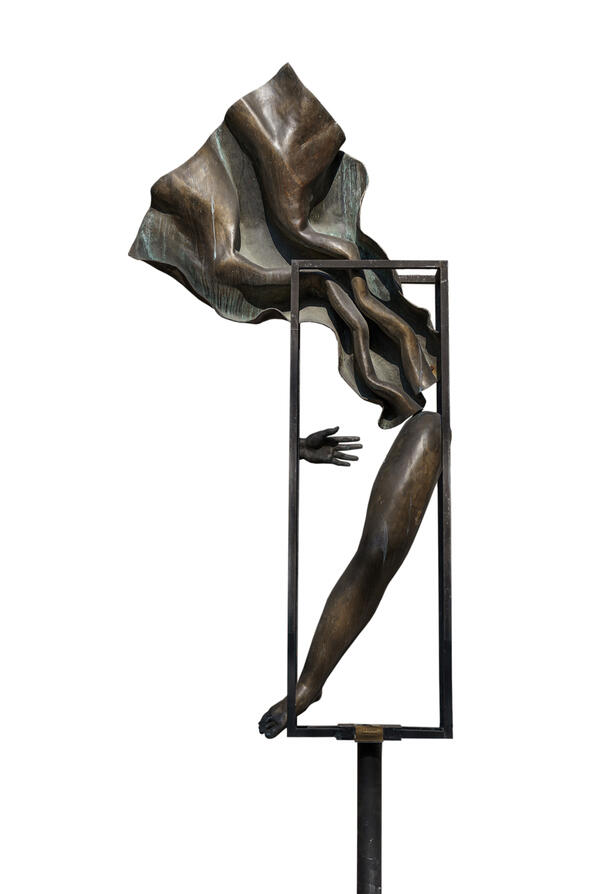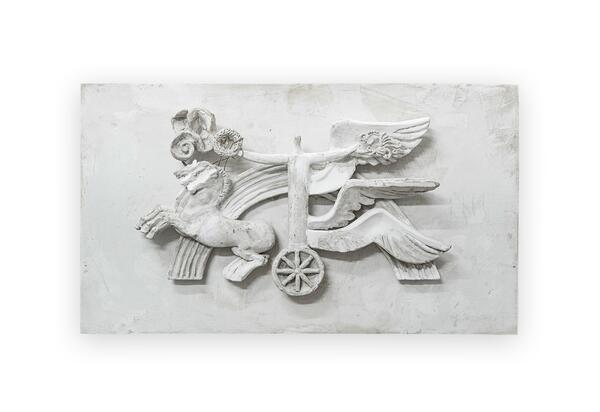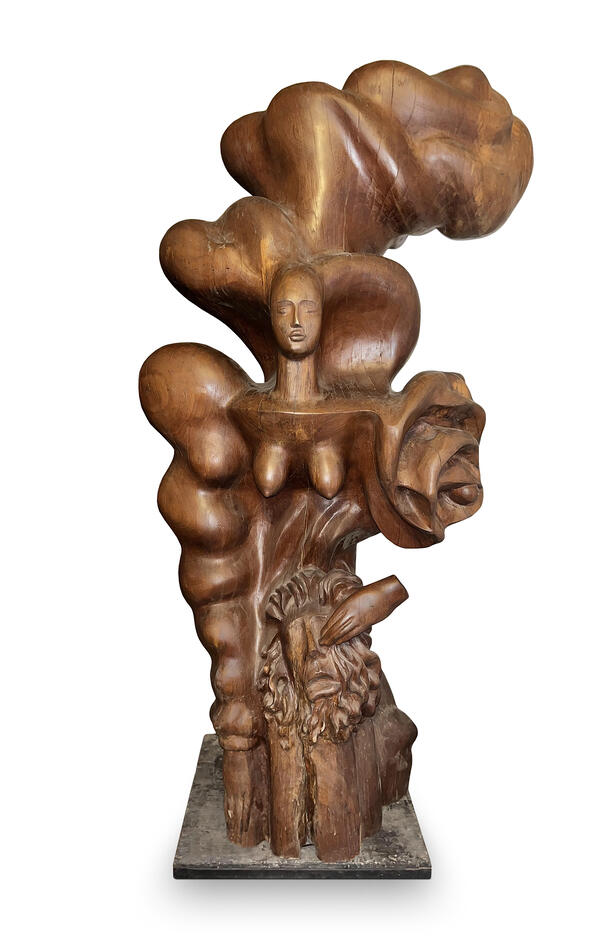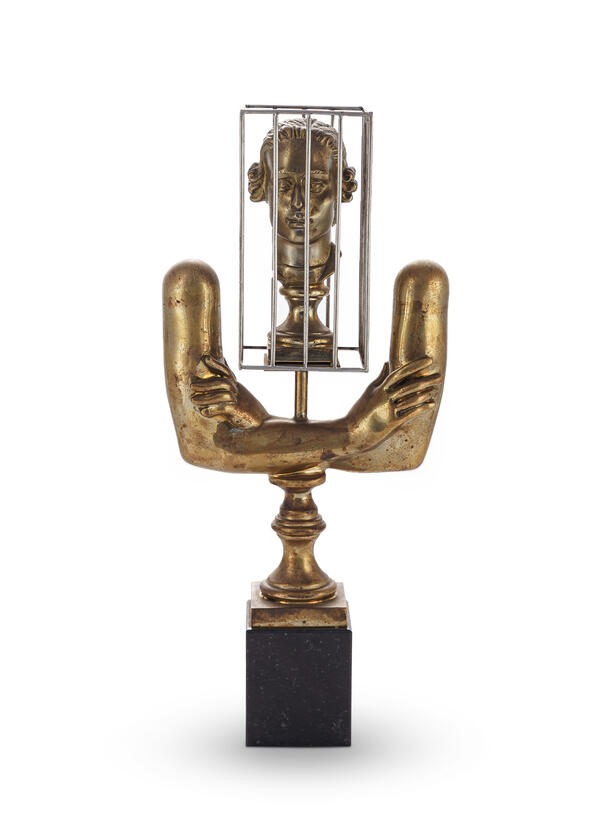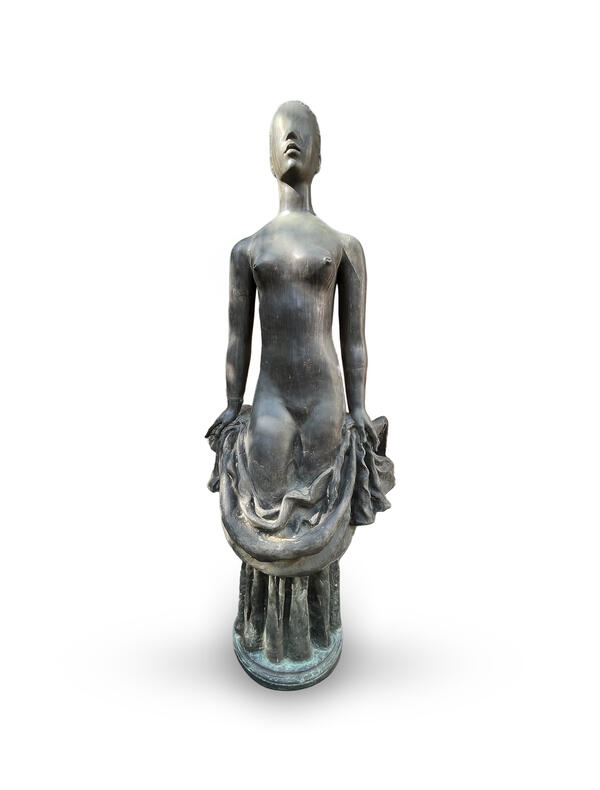In the second half of the 20th century and the early 21st century, one of the most notable features of sculptural art was the blurring of conventional genre boundaries. In addition to the traditional genre of portrait, other themes began to appear in sculptural compositions. Before that, scenes of landscape, the environment, the interior, and still life had been reserved for paintings and graphics. This creative innovation is reflected in Alexander Burganov’s “Figure in the Interior”. The sculptor produced a portrait of his daughter that captures not only her likeness but also the space and time. She is depicted the moment she is leaving the room.
The interior is not depicted on a flat relief plane. It is three-dimensional and active. The sculptor emphasizes its importance for the composition by including the word “interior” in the title.
It is even more challenging to capture time in sculpture. The artist chose to show two figures: a smaller one in the background is just getting ready to take a step, while a larger one in the foreground is already leaving the room. This eternal movement through space and time is one of the main features of this composition.

